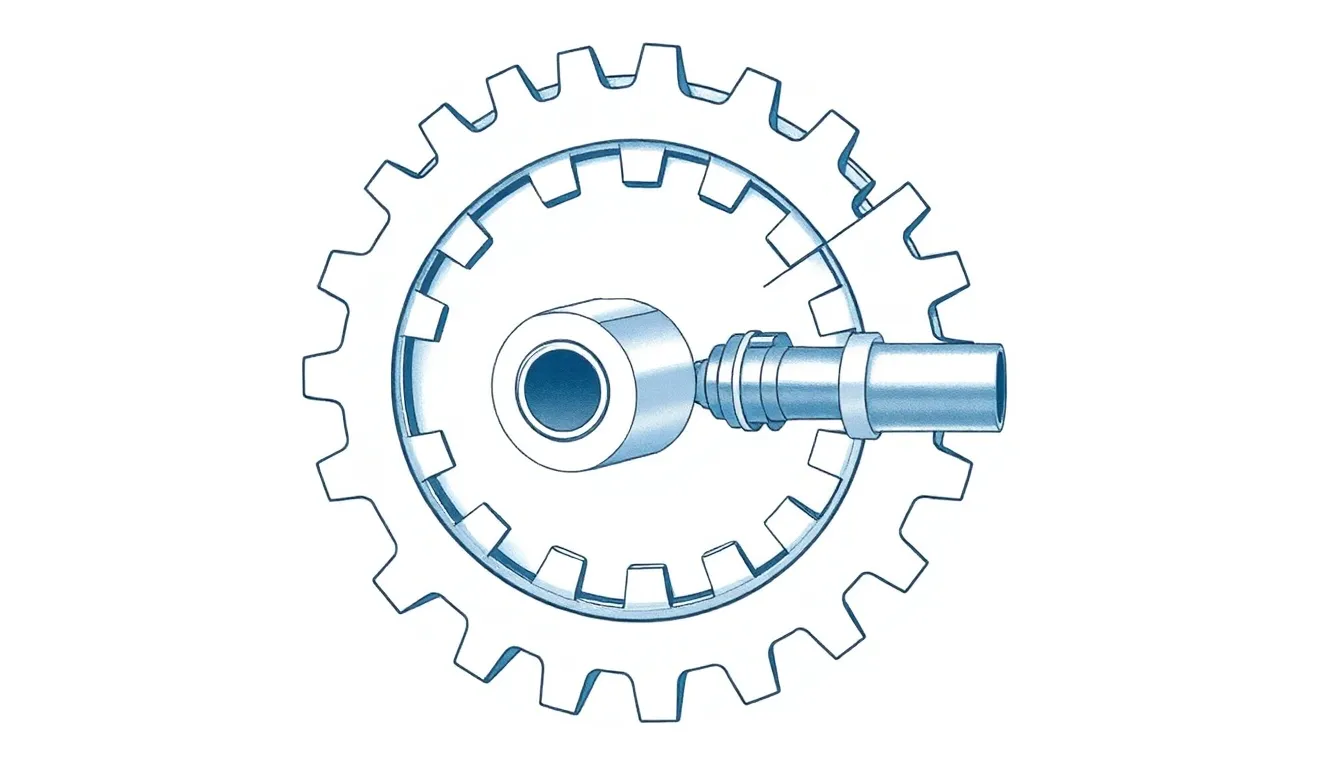Table of Contents
ToggleGears might not be the life of the party, but they sure know how to get things moving! These mechanical wonders are the unsung heroes behind countless machines, from your trusty bicycle to the complex engines of airplanes. Understanding the parts of a gear can turn anyone into a gearhead faster than you can say “toothed wheel!”
Overview of Gears
Gears consist of several key components, each contributing to overall functionality. Teeth form the primary interaction point, allowing one gear to mesh with another. The pitch circle defines the imaginary circle where gear teeth effectively engage, influencing the gear ratio and motion transfer.
A gear’s bore serves as the central hole, accommodating the shaft for attachment to machinery. Each gear features two primary configurations: spur and helical. Spur gears align parallel to each other, while helical gears operate with angled teeth, providing smoother engagement.
Materials play a significant role in gear performance. Steel offers high strength and durability, making it a common choice for heavy-duty applications. Plastic gears operate silently, often finding use in less demanding environments.
Lubrication is essential for reducing friction and enhancing longevity. Effective lubrication minimizes wear and heat buildup during operation. Gearboxes integrate multiple gears for speed reduction or torque multiplication, reflecting the gear’s versatility in various machines.
Understanding these parts helps in diagnosing issues and optimizing gear systems. Each component’s role is crucial for maintaining efficiency and reliability in mechanical systems. Mastering this knowledge enables individuals to appreciate the intricate design behind everyday machinery.
Main Parts of a Gear

Gears consist of several critical components that work together to ensure efficient operation. Each part plays a unique role in the gear’s function and contributes to the overall performance in machinery.
Gear Teeth
Gear teeth serve as engaging points that enable meshing with adjacent gears. They come in various shapes and sizes, allowing compatibility with different gear types. The design of the teeth influences the smoothness of operation and the transfer of motion between gears. Teeth with precise shapes ensure minimal slippage and noise during engagement. Additionally, the number of teeth determines the gear ratio, affecting speed and torque dynamics.
Gear Hub
The gear hub acts as the central anchor point for the gear. It features a bore that fits snugly onto the shaft, allowing for stable mounting and rotation. Machining and finishing of the hub surface are vital for reducing wear and enhancing fit. Hubs support load distribution across the gear, impacting overall durability. Proper installation of the hub prevents misalignment and ensures optimal performance within the machinery.
Gear Shaft
The gear shaft provides essential support and connects the gear to the power source. It absorbs torque generated during gear operation, transferring energy efficiently throughout the system. Shafts come in various lengths and diameters, tailored to specific gear applications. Bearings often accompany shafts to minimize friction and improve rotational smoothness. Selecting the right shaft size and material ensures longevity and reliability in gear assemblies.
Types of Gears
Gears come in various types, each designed for specific applications and functions. Understanding these types enhances the knowledge about gear mechanics.
Spur Gears
Spur gears are the most common type, featuring straight teeth aligned parallel to the gear axis. They excel in transmitting motion and force efficiently. These gears operate best in low-speed applications, keeping noise levels minimal. Their simplicity in design ensures ease of manufacturing and maintenance. When installed, spur gears maintain uniform speed but can produce significant vibration at high speeds. Applications include clocks, factory machinery, and conveyor systems, where precision and reliability are crucial.
Bevel Gears
Bevel gears showcase a distinct design with cone-shaped teeth, facilitating the transfer of motion between shafts that intersect at angles. These gears excel where space constraints exist, allowing changes in rotational direction. The most common types include miter gears, which have equal numbers of teeth, and angular bevel gears, which vary in tooth count for distinct speed ratios. Bevel gears find extensive use in automotive differentials, power tools, and various machinery to achieve efficient power transfer at varying angles.
Material Used in Gears
Gears consist of various materials based on their intended use and performance requirements. Steel is a primary choice for heavy-duty applications due to its strength and durability. Manufacturers often prefer alloy steels for their ability to withstand high stress and wear, making them ideal for machinery like automotive and industrial systems.
Plastic gears find their place in less demanding environments where noise reduction is critical. These components operate quietly and resist corrosion, enhancing their lifespan in specific applications. Nylon and acetal are common materials used for these gears, providing balance between performance and cost.
Cast iron serves as another material in gear production, valued for its excellent wear resistance and shock absorption capabilities. This makes cast iron gears suitable for applications that experience high impact, such as heavy machinery and conveyor systems.
Brass is utilized for smaller gears, especially in precision applications. Its properties contribute to smooth operation and resistance to corrosion, often seen in clocks and fine machinery.
Each material has specific characteristics that influence gear performance. Choosing the right material significantly affects operational efficiency, lifespan, and maintenance needs in gear systems. Proper lubrication also enhances the efficiency of gears, further extending their operational life and reducing friction. Understanding these materials allows for more informed decisions, leading to optimized gear performance in various machines.
Understanding the parts of a gear is vital for anyone interested in machinery and its mechanics. Each component plays a specific role in ensuring efficiency and durability. From the teeth that mesh for motion transfer to the materials that enhance performance, every detail counts.
Knowledge of different gear types and their applications can transform one’s perspective on everyday machinery. Recognizing the importance of proper lubrication and the right materials further empowers individuals to maintain and optimize gear systems. This appreciation for gears not only fosters enthusiasm but also equips enthusiasts with the tools to tackle mechanical challenges confidently.




